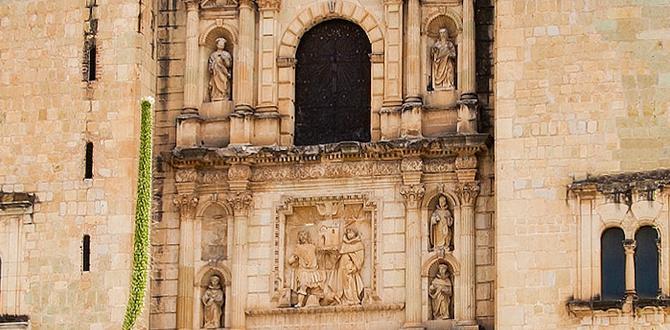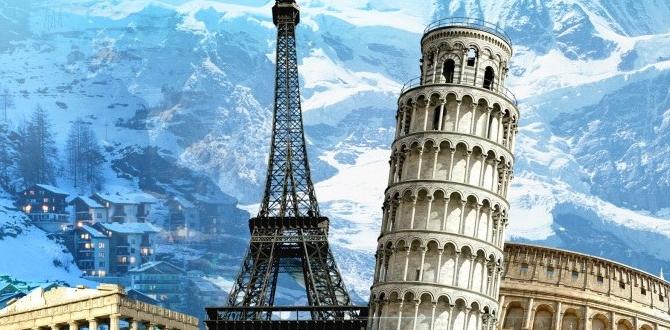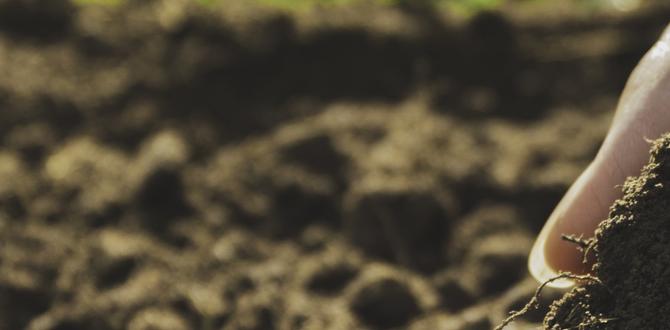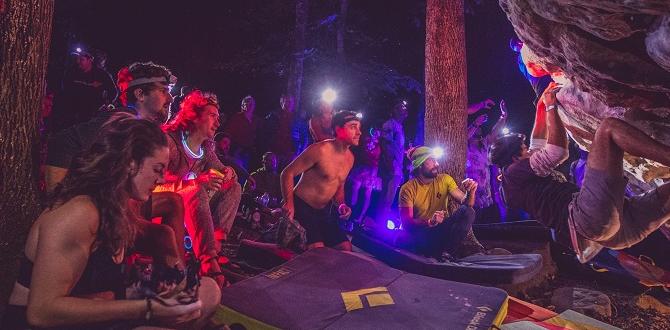Planning your Atacama Desert 4-day itinerary is totally doable! This guide breaks down the must-see spots in a beginner-friendly way, so you can experience the magic of Chile’s driest desert with ease and confidence. Get ready for an unforgettable adventure with practical tips to make your trip smooth and comfortable.
Welcome, fellow explorers! Dreaming of starry nights and otherworldly landscapes? The Atacama Desert in Chile is a place that truly feels like another planet. It’s famous for being one of the driest places on Earth, which means incredible stargazing and unique geological wonders.
Planning your trip can feel a bit daunting at first, especially with so much to see and do in just a few days. But don’t worry, I’m here to simplify it all! This beginner’s guide is packed with easy-to-follow advice to help you craft the perfect 4-day itinerary. We’ll cover the essentials, from packing smart to navigating the best sites, ensuring your journey is comfortable, memorable, and stress-free. Let’s dive into the adventure!
Your Essential Atacama Desert 4-Day Itinerary
The Atacama Desert is an immense and breathtaking region, and four days is a fantastic amount of time to get a solid taste of its unique beauty. This itinerary is designed to balance iconic sights with manageable travel, ensuring you get the most out of your visit without feeling rushed. San Pedro de Atacama will be your base town for exploring. It’s a charming oasis with everything you need, from accommodation and food to tour operators.
Day 1: Arrival and Geysers of Tatio
Your Atacama adventure begins with an early start! The Geysers of Tatio are best seen at sunrise when the temperature contrast is most dramatic, creating impressive steam plumes. It’s a bit of a journey, so prepare for an early wake-up call (around 4 AM!).
Morning: Geysers of Tatio
After a bumpy but scenic ride in a 4×4 vehicle, you’ll arrive at the geyser field. Wrap up warm – it can be close to freezing! Witnessing the raw power of nature as steam erupts from the earth is an unforgettable experience. Most tours include breakfast with a view of the geysers, which is a delightful perk.
- What to Expect: At over 4,300 meters (14,000 feet) above sea level, Tatio is the third-largest geyser field in the world. The steam vents are most active at dawn.
- Temperature: Expect temperatures to be well below freezing, so layers are crucial.
- Duration: Allow for a half-day trip, as you’ll be returning to San Pedro by late morning.
Afternoon: Relax and Explore San Pedro de Atacama
After your early morning excursion, enjoy a more relaxed afternoon. Settle into your accommodation, grab lunch in town, and take a stroll through the adobe streets of San Pedro. Visit the local church and the artisanal market for souvenirs. This is also a great time to book any remaining tours for the following days.
Evening: Stargazing Tour
The Atacama Desert boasts some of the clearest skies on Earth, making it a premier stargazing destination.
The European Southern Observatory (ESO) operates several major astronomical facilities here, testament to its exceptional conditions. Numerous tour operators offer excellent stargazing experiences. You’ll learn about constellations, planets, and the Milky Way, often with powerful telescopes for close-up views. This is an absolute highlight of any Atacama trip!
Day 2: Valle de la Luna & Valle de la Muerte
Today is all about exploring the iconic lunar landscapes surrounding San Pedro. These valleys offer stunning geological formations and incredible photo opportunities.
Morning: Valle de la Luna (Moon Valley)
Step onto what feels like another planet. Valle de la Luna is famous for its salt mountains, sand dunes, and surreal rock formations that resemble the lunar surface. You’ll hike through canyons, see the Three Marias rock formations, and marvel at the salt caves. The views are simply spectacular.
- Key Features: Amphitheatre, Salt Caves, Great Dune of Chile.
- What to Bring: Sunscreen, hat, sunglasses, plenty of water, comfortable walking shoes.
Afternoon: Valle de la Muerte (Death Valley)
Just a short distance from Moon Valley, Death Valley offers dramatic cliffs, sand dunes, and panoramic views. It’s a popular spot for sandboarding for the adventurous! Even if you don’t sandboard, the sheer scale and rugged beauty of this valley are awe-inspiring.
- Activities: Sandboarding (rent boards in town or from tour operators), hiking, photography.
- Best Time to Visit: Late afternoon for softer light and cooler temperatures.
Evening: Sunset at Mirador de Kari (Ojos del Salar)
Conclude your day at Mirador de Kari, also known as Ojos del Salar. This is a prime spot to watch the sunset over the vast salt flats, offering a spectacular display of colors as the sun dips below the horizon. It’s a peaceful and profoundly beautiful way to end the day.
Day 3: High Andean Salt Flats and Lagunas
This day takes you to higher altitudes to explore the stunning high-altitude desert landscapes, including colorful lagoons and fascinating wildlife.
Full Day Trip: Altiplanic Lagoons and Salar de Atacama
Embark on a full-day tour that typically includes:
- Salar de Atacama (Atacama Salt Flat): This is Chile’s largest salt flat, a surreal expanse of white stretching to the horizon. You’ll likely visit Laguna Chaxa, a salt lagoon teeming with flamingos. Seeing these graceful birds against the stark white salt is a memorable sight. These flamingos, including the Andean-, Chilean-, and the rare James’s flamingo, are perfectly adapted to these salty waters.
- Lagunas Altiplánicas (Miscanti and Miñiques): These two stunning high-altitude lagoons, nestled at over 4,000 meters (13,000 feet), are incredible. Their deep blue waters, framed by dramatic volcanoes and puna landscape, are breathtaking. Keep an eye out for vicuñas and other native wildlife.
- Piedras Rojas (Red Rocks): This often-included stop features striking red rocks contrasting with the turquoise water of Laguna Tebenquiche. The vibrant colors and dramatic geological features make it a photographer’s dream.
- Village of Socaire: Many tours stop in Socaire, a traditional Andean village where you can experience local culture and perhaps enjoy a typical lunch.
Remember to stay hydrated and move slowly due to the altitude. Most tours provide snacks and water, but it’s wise to bring your own too.
| Item | Description | Altitude |
|---|---|---|
| Salar de Atacama (Laguna Chaxa) | Vast salt flat, home to flamingos. | 2,300 m (7,500 ft) |
| Lagunas Altiplánicas (Miscanti & Miñiques) | High-altitude, vividly colored lagoons. | 4,100 m (13,500 ft) |
| Piedras Rojas | Red rock formations by a turquoise salt lake. | 4,000 m (13,100 ft) |
Day 4: Puritama Hot Springs and Departure
Your final day offers a chance for relaxation and rejuvenation before heading home.
Morning: Termas de Puritama (Puritama Hot Springs)
After days of exploration, what could be better than soaking in naturally heated thermal waters? Termas de Puritama is a series of beautiful pools nestled in a canyon. The water is a comfortable temperature, and the natural setting is incredibly serene. It’s the perfect way to unwind and reflect on your Atacama adventures. Many tours offer a half-day trip here, or you can arrange your own transport.
- What to bring: Swimsuit, towel, flip-flops or water shoes, a waterproof bag for your belongings.
- Benefits: The mineral-rich waters are said to have therapeutic properties.
You can find more details about the geological conditions and mineral properties of the hot springs on scientific resources like USGS Water Science School, which explains how geothermal heat warms underground water sources.
Afternoon: Last-Minute Souvenirs and Departure
Head back to San Pedro de Atacama to enjoy a final lunch. Pick up any last-minute souvenirs you might have had your eye on, such as local crafts or llama wool products. Depending on your flight schedule, you’ll then make your way to Calama Airport (CJC) for your departure. Allow ample time for travel to the airport, as shuttle services are common and necessary.
Essential Packing Tips for the Atacama Desert
The Atacama Desert has a unique climate with extreme temperature fluctuations. Packing smart is key to comfort and enjoyment. Think layers!
- Clothing:
- Base Layers: Thermal underwear (long johns and long-sleeved tops) are essential, especially for early mornings and evenings, and for high-altitude tours like Tatio Geysers.
- Mid Layers: Fleece jackets or sweaters provide warmth.
- Outer Layers: A windproof and waterproof jacket is highly recommended. It can get very windy and cold, especially at high altitudes or during sunrise tours.
- Bottoms: Comfortable hiking pants or sturdy trekking trousers. Jeans are generally not recommended due to their inflexibility and poor performance when wet (though rain is rare, but wind can feel like it!).
- Tops: T-shirts and long-sleeved shirts for daytime.
- Footwear:
- Hiking Boots: Comfortable, broken-in hiking boots with good ankle support are ideal for exploring uneven terrain.
- Sandals/Flip-flops: For relaxing in town or at hot springs.
- Socks: Plenty of comfortable socks, including a few pairs of warmer, wool socks.
- Accessories:
- Sun Protection: A wide-brimmed hat, sunglasses (with UV protection), and high SPF sunscreen are non-negotiable. The sun at high altitudes is intense.
- Lip Balm: With SPF protection.
- Scarf/Buff: To protect your face from dust and wind, especially during tours and transfer.
- Gloves: Particularly important for early morning tours like Tatio Geysers.
- Reusable Water Bottle: Staying hydrated is critical. The air is very dry.
- Small Backpack: For day trips to carry water, snacks, camera, and extra layers.
- Health & Comfort:
- Medications: Any personal prescription medications, plus basics like pain relievers.
- For Parents & Adults Needing Extra Comfort: If you’re traveling with young children or if you’re an adult who finds comfort and security in having adult or child diapers, packing these discreetly is a practical step. Brands like Depend or Always Discreet offer reliable options that can provide peace of mind, especially on long travel days or during excursions where restroom access might be limited. They offer discreet protection, ensuring you can focus on the incredible scenery rather than any discomfort.
- Camera & Power Bank: To capture all the amazing sights and keep your devices charged.
Navigating Altitude in the Atacama Desert
The Atacama Desert, especially areas visited on day tours, is at a high altitude. San Pedro de Atacama itself is around 2,400 meters (7,900 feet), but tours can take you much higher. Many visitors reach over 4,000 meters (13,000 feet).
Altitude sickness, or soroche, can affect anyone. Here’s how to minimize its impact:
- Acclimatize: Spend your first day taking it easy in San Pedro. Avoid strenuous activity and heavy meals.
- Hydrate!: Drink plenty of water. Avoid alcohol and caffeine, which can dehydrate you.
- Eat Light: Opt for light, digestible meals.
- Ascend Slowly: If possible, choose tours that gradually increase in altitude over a couple of days.
- Listen to Your Body: If you feel nauseous, dizzy, or have a headache, rest. Let your tour guide know if symptoms worsen.
- Medication: Some people find Diamox (acetazolamide) helpful, but consult your doctor before your trip. Coca leaves or tea are a traditional remedy used by locals in South America.
Sample Atacama Desert 4-Day Itinerary at a Glance
Here’s a quick overview to help visualize your trip:
| Day | Morning | Afternoon | Evening |
|---|---|---|---|
| Day 1 | Arrival, Geysers of Tatio (early start) | Explore San Pedro town | Stargazing Tour |
| Day 2 | Valle de la Luna | Valle de la Muerte | Sunset at Mirador de Kari |
| Day 3 | Full day tour: Salar de Atacama, Altiplanic Lagoons & Piedras Rojas | Relax in San Pedro | |
| Day 4 | Termas de Puritama (Hot Springs) | Last-minute shopping, lunch | Departure from Calama Airport (CJC) |
Frequently Asked Questions
Q1: How do I get to the Atacama Desert?
The most common way to reach the Atacama Desert is by flying into El Loa Airport in Calama (CJC). From Calama, you’ll need to take a shuttle bus or private transfer to San Pedro de Atacama, which is about a 1.5-hour drive.
Q2: What is the best time of year to visit the Atacama Desert?
The Atacama Desert is a year-round destination. The weather is generally dry and sunny. High season is from December to February (summer), which can be warmer. Shoulder seasons (March-May and September-November) offer pleasant temperatures and fewer crowds. June to August (winter) is cooler, especially at night, but still excellent for stargazing.
Q3: Do I need to book tours in advance?
For popular tours, especially during peak season, it’s advisable to book at least a few days in advance, or even before you arrive. However, San Pedro de Atacama has many tour agencies, so you can also book tours once you are there. Booking in person allows you to compare prices and availability.
Q4: Is the Atacama Desert safe for solo travelers?
Yes, the Atacama Desert is generally considered very safe for solo travelers. San Pedro de Atacama is a small, tourist-friendly town. However, as with any travel, it’s always wise to be aware of your surroundings, keep valuables secure, and inform someone of your general plans.
Q5: What should I wear at the Gysers of Tatio?
You need to dress in very warm layers. Temperatures can be below freezing (0°C or 32°F). Wear thermal underwear, a fleece, a warm, windproof jacket, a hat, gloves, and warm socks. You’ll be glad you did!
Q6: Can I drink the tap water in San Pedro de Atacama?
It is generally recommended to drink bottled water or water purified through reliable methods. While tap water may be potable in some parts of Chile, it’s best to err on the side of caution in the desert environment to avoid any potential stomach upset. Consistently using bottled water or a filtered system is a good practice.






